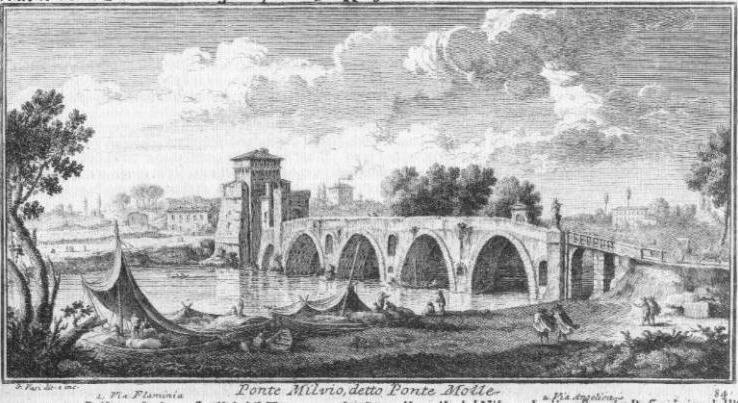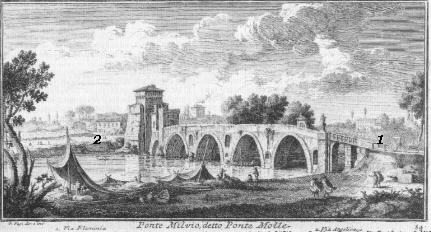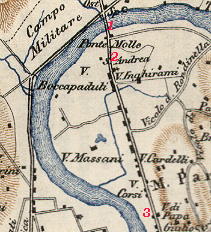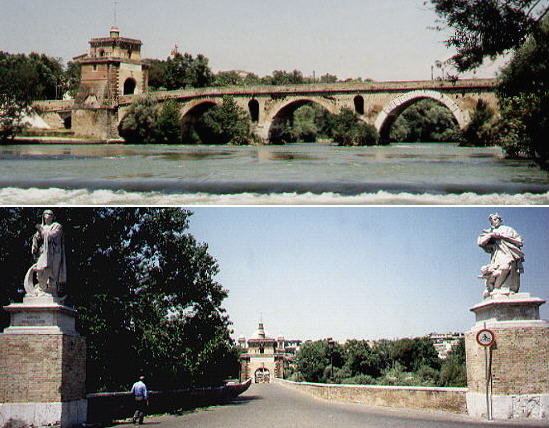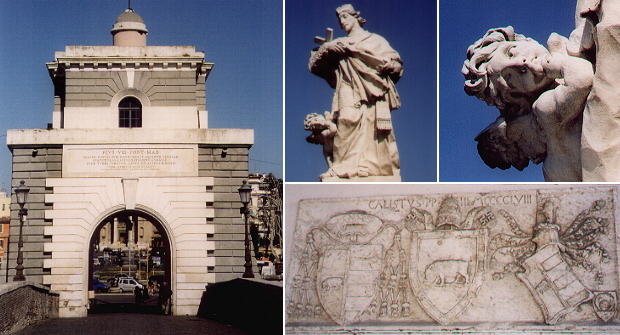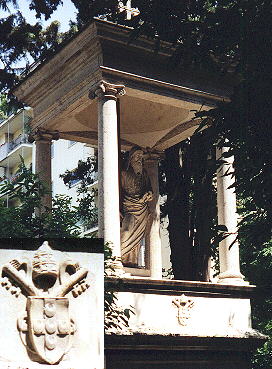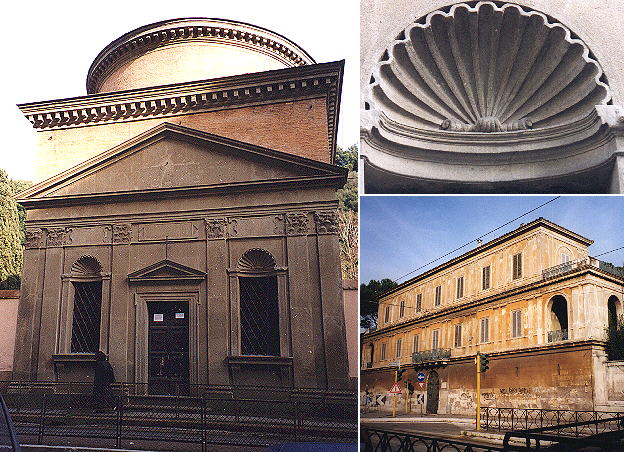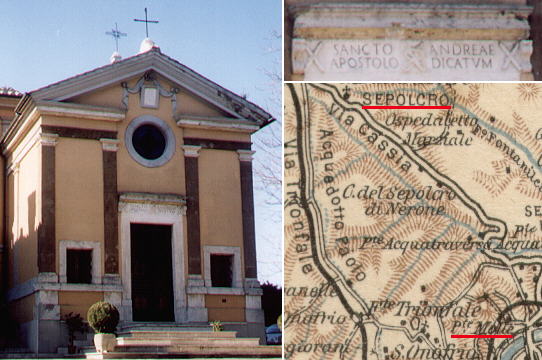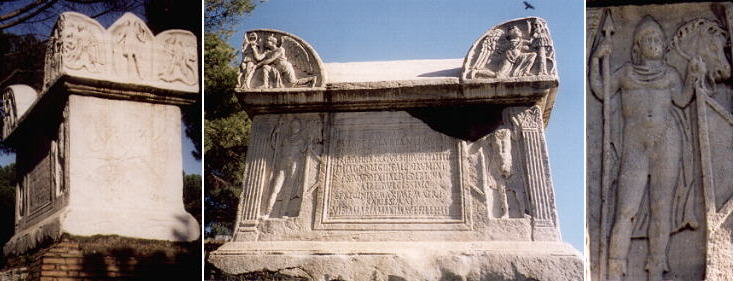  Ponte Milvio (Book 5) (Day 1) (ViewC3) In this page:
Ponte Milvio is associated with the many battles fought for it, of
which the most important and celebrated is the victory of Constantine over
Maxentius in 312 (in the background a detail of the fresco by Giulio Romano
in the Vatican). It is crossed by Via Flaminia.
In the description below the plate Vasi made reference to: 1) Via Flaminia; 2) Via Angelica (leading to Porta Angelica).
The small 1920 map shows 1) Ponte Milvio (in the past called Ponte Molle); 2) Statua di S. Andrea; 3) Tempio di S. Andrea.
Today In 1806 Pius VII rebuilt almost entirely the bridge, which was much damaged in 1849 as part of it was blown up by Garibaldi to prevent the French troops entering Rome.
Pius IX added the statue on the left (l'Immacolata). The one on the right (S. Giovanni Nepomuceno by Francesco Mochi) was there at Vasi's time and can be seen in the plate. S. Giovanni Nepomuceno was considered the patron of those in danger of drowning and this explains why his statues were often erected in the proximity of rivers. He was also the patron of those who suffer because they do not betray secrets, thus the little angel is portrayed with a finger on his lips. For more statues of S. Giovanni Nepomuceno (St John Nepomuk) in Prague click here.
The elegant tower was designed by Valadier. Inside the tower there is one of the very few coats of arms of Callistus III, together with the coat of arms of his nephew Cardinal Rodrigo Lenzuoli Borgia who became Pope Alexander VI. The little moon on the right lower corner is a reference to Cardinal Silvio Enea Piccolomini who became Pope Pius II.
Close to Ponte Milvio in a little square between tall buildings there is a little cemetery where the tombs are grouped around a statue of St. Andrew built here by Pius II to honour the head of the Saint being brought to Rome in the XVth century from Greece, which was falling under the Turk domination.
Near his Villa Julius III built this little chapel in honour of St. Andrew because he was freed by Charles V on the day of St. Andrew in 1527. He had been given as a prisoner by Clemens VII to the Emperor to grant the respect by the Pope of the agreements reached after the Sack of Rome. The building is by Vignola, who made use of "pietra serena" the grey stone of so many Florentine churches, rather than Roman "travertino". Between Porta del Popolo and the Temple there is a simple, but elegant Renaissance building, known as Casino Del Monte (the surname of Julius III) and renamed Casina Vagnuzzi after the XIXth century restoration by Valadier. S. Andrea Apostolo sulla Via Cassia
Immediately after Ponte Milvio the road splits into Via Flaminia (click here to move along Via Flaminia) leading to Rimini and into Via Cassia leading to Florence. At the VIth mile of Via Cassia a chapel was dedicated to St Andrew by Cardinal Antonio Pignatelli in 1690, just prior to becoming Pope Innocentius XII. A few years later some other buildings were added to the little chapel. Today the buildings host a nunnery and a school.
The area is known as Tomba di Nerone because in the Middle Ages a Roman tomb was thought
to be the tomb of the Emperor Nero. Due to the association with Nero, thought to be a sorcerer, the monument had an ill
reputation and many unfortunate events occurred in the area were attributed to it. The monument built in the IIIrd century A.D.
was dedicated by Vibia Maria Maxima to her father Vibus Marianus and it is finely decorated with reliefs showing among other subjects,
Castor and Pollux, the horse tamers demigods who protected Rome.
Next plate in Book 5: Porto
di Ripetta
Go
to |
All images © 1999 - 2003 by Roberto Piperno. Write to romapip@quipo.it
